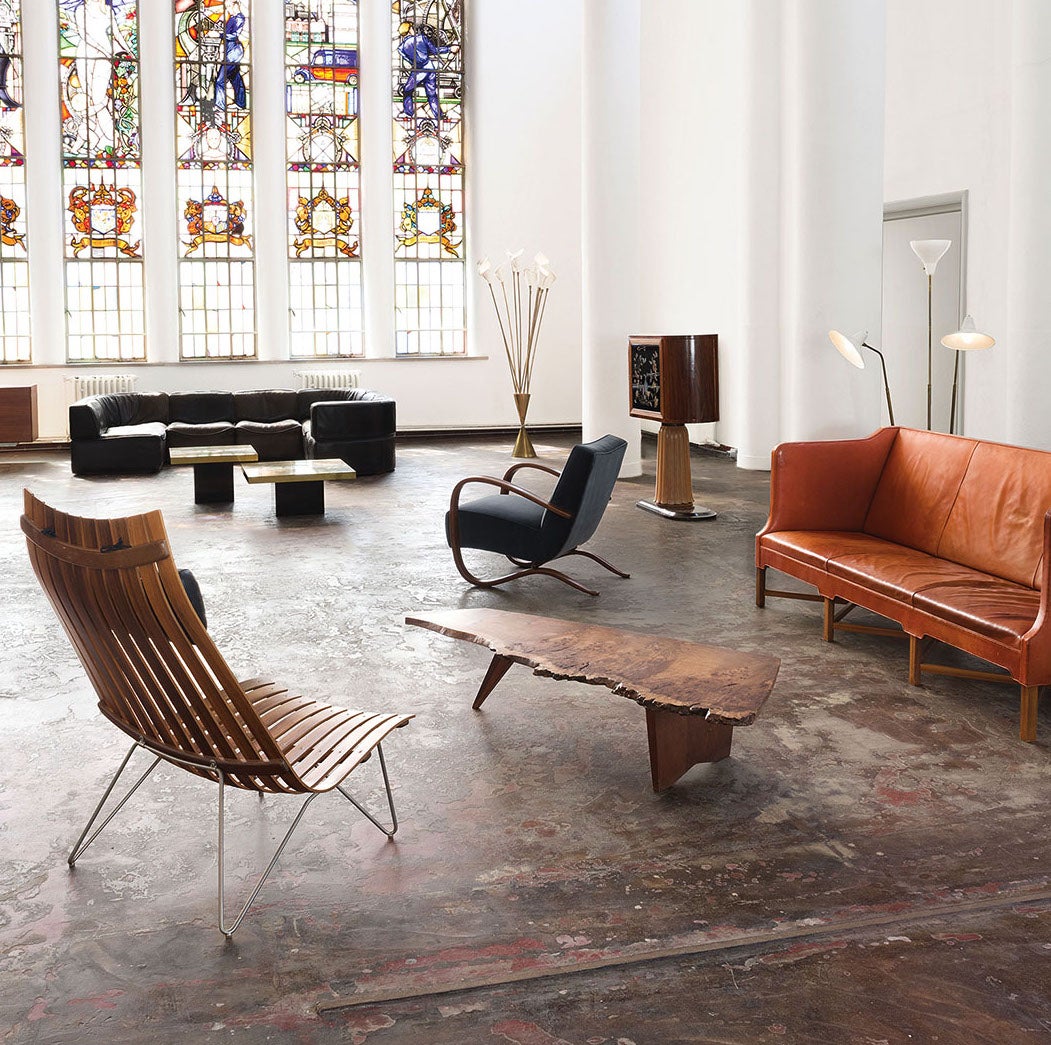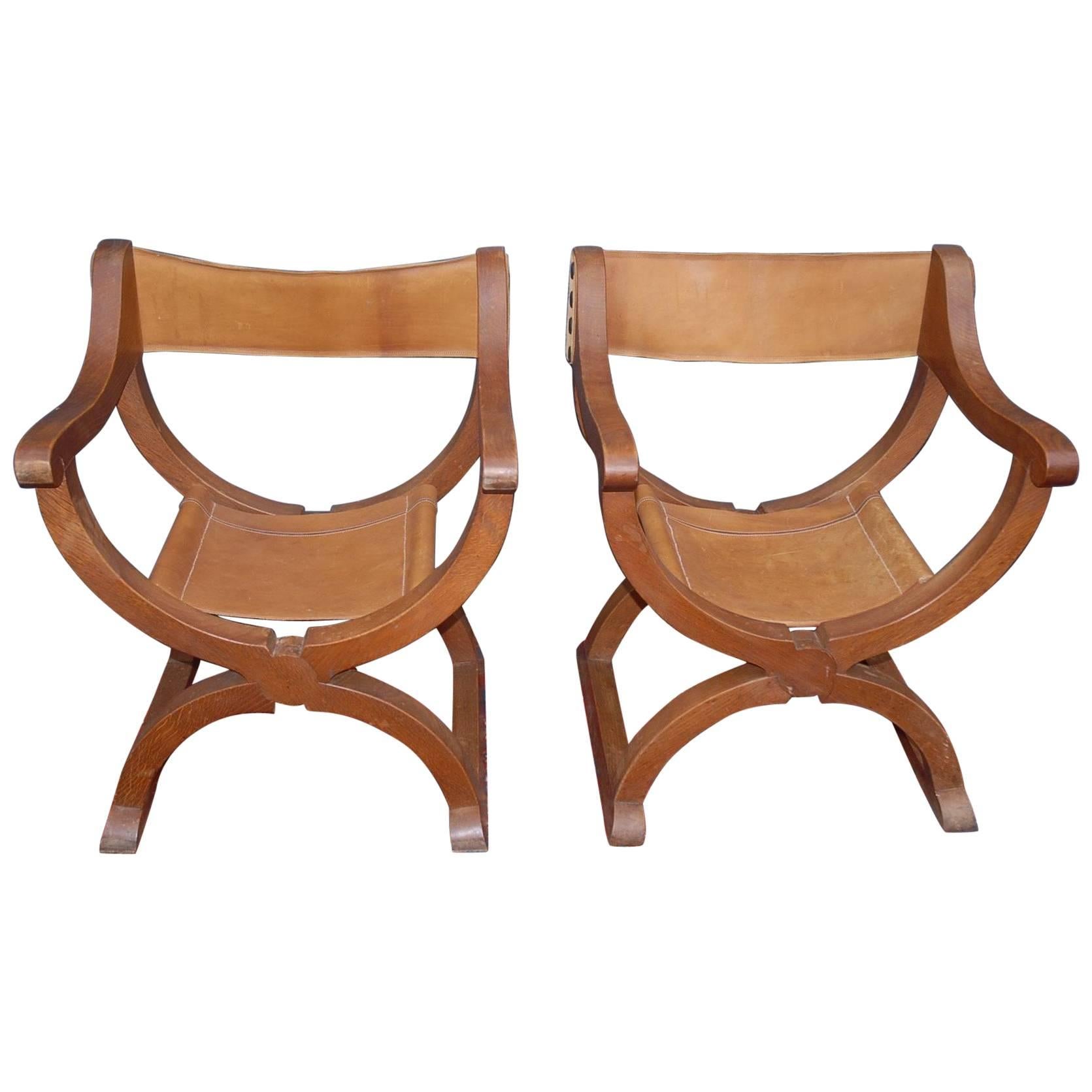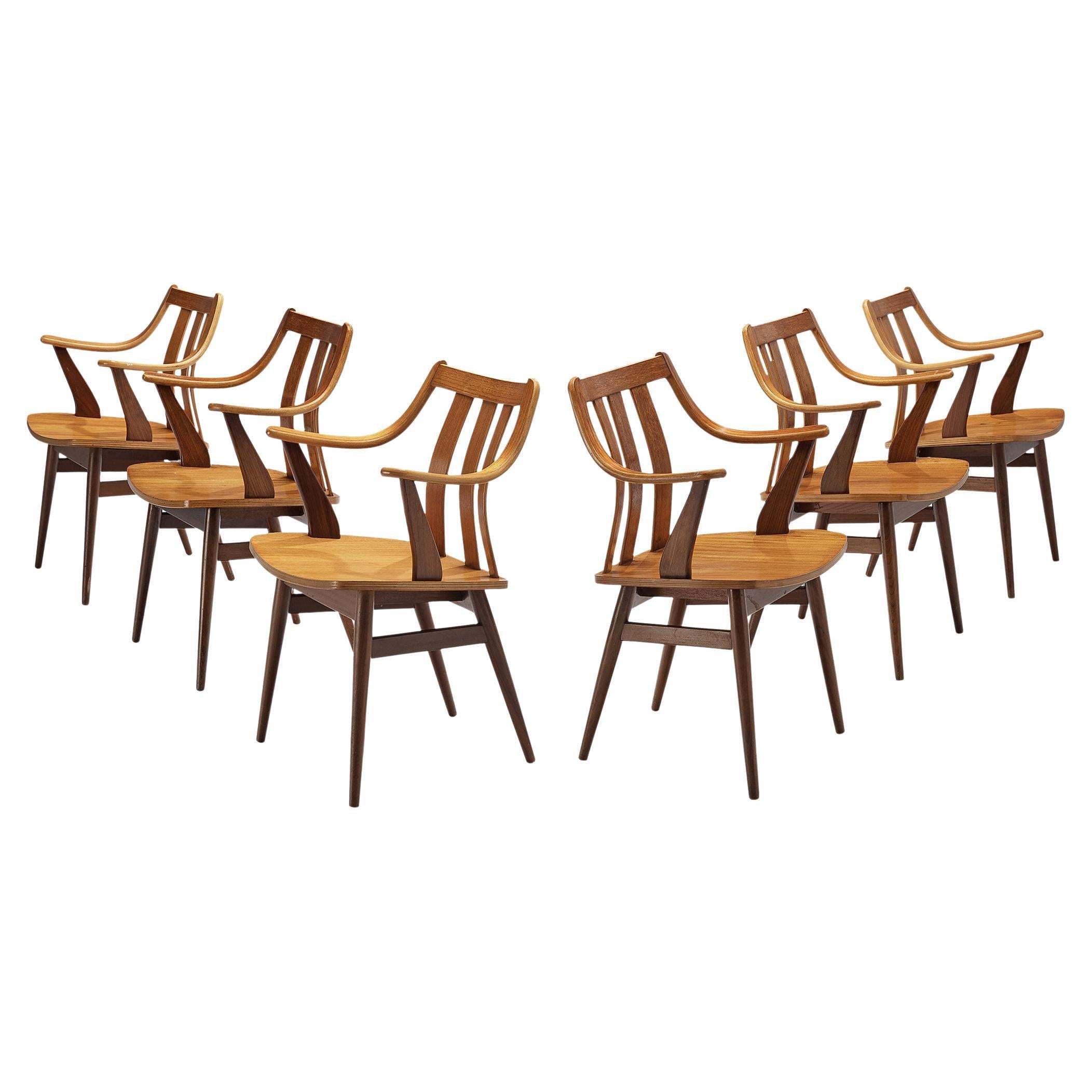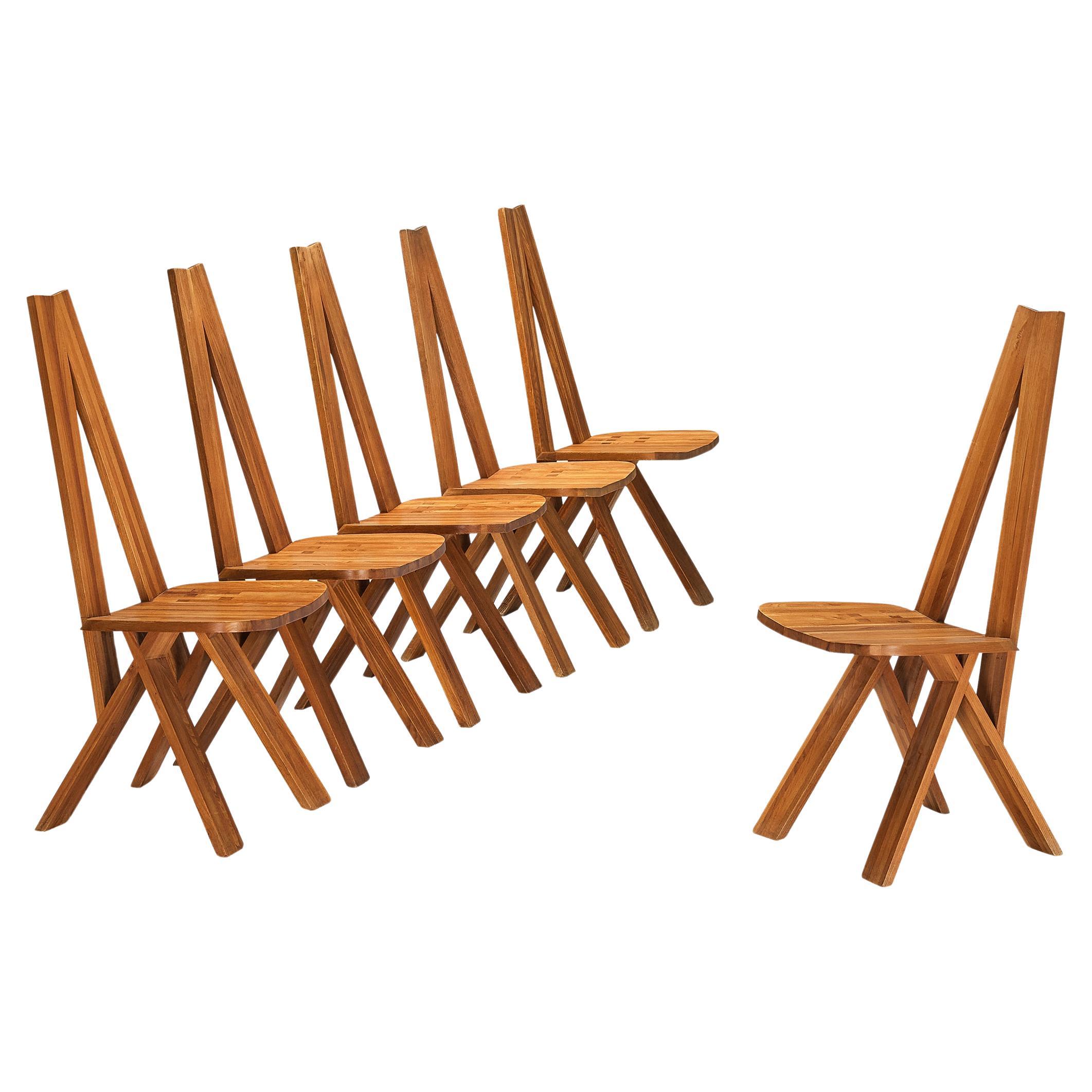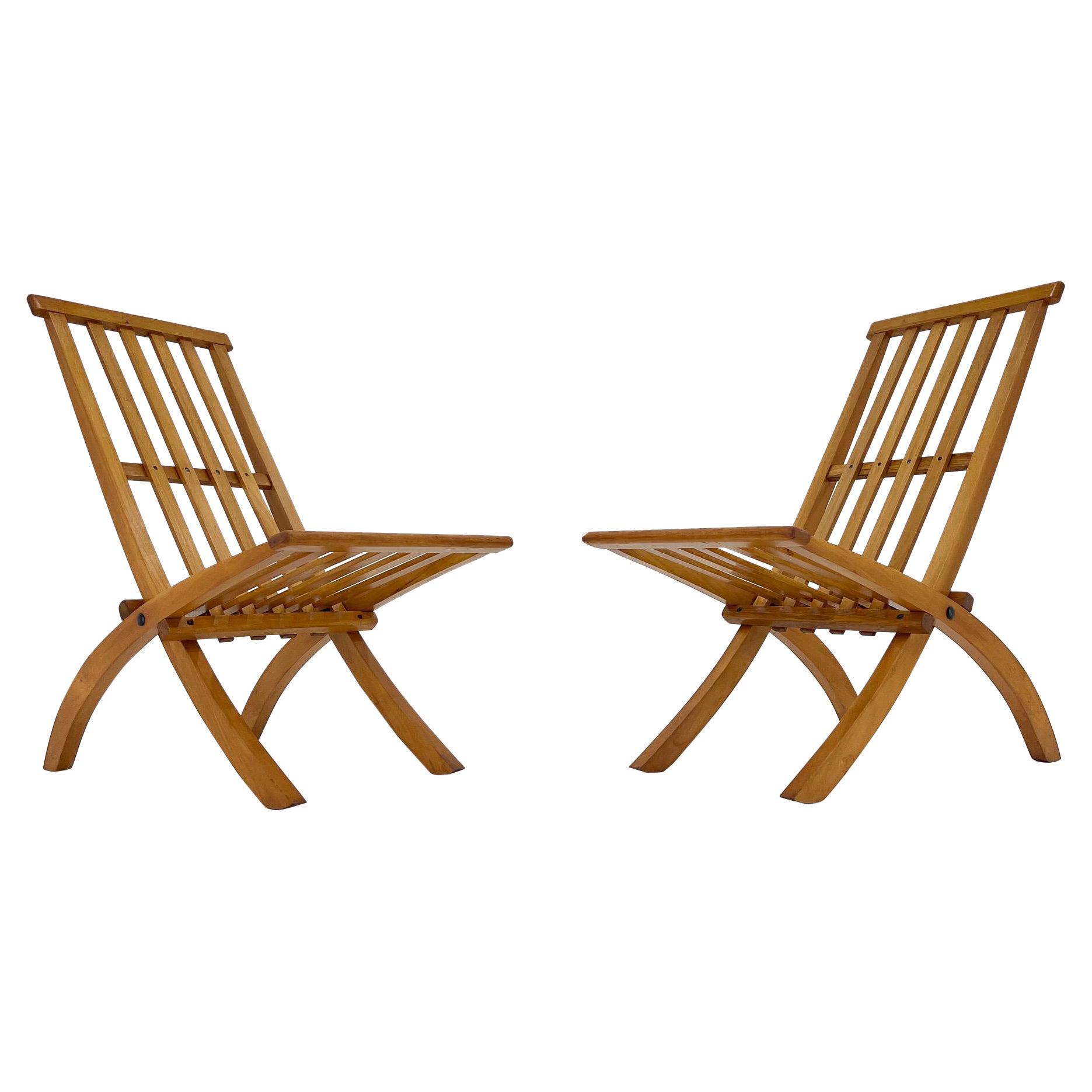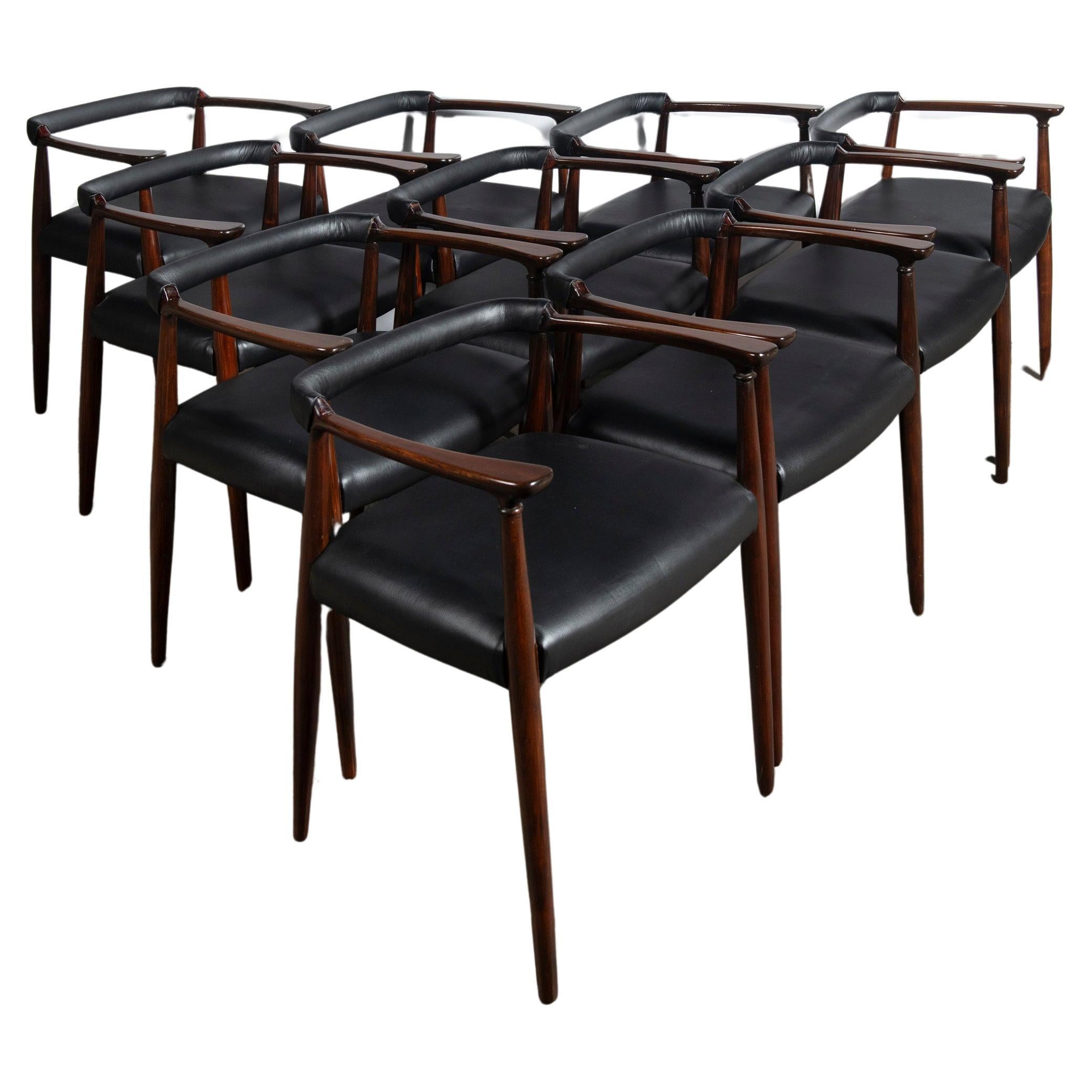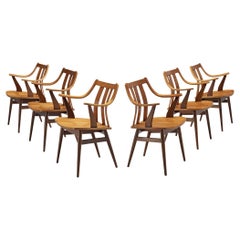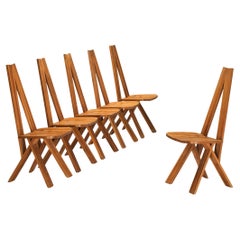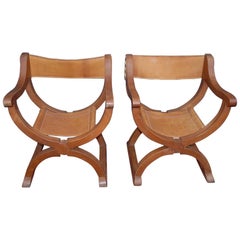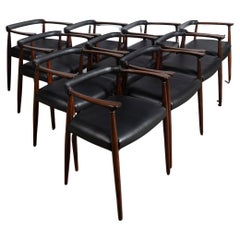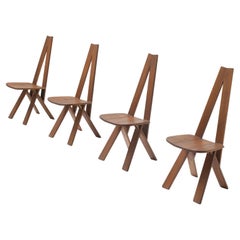Arthur Espenet, 'Wishbone' dining armchairs, Hyedua wood, leather, Bolinas, California, United States, 1978
A contemporary of Wharton Esherick and George Nakashima, the self-taught American craftsman Arthur Espenet Carpenter was a visionary woodworker and furniture designer, renowned for his masterful craftsmanship and the sculptural elegance of his creations. His furniture seamlessly blended form and function, characterized by fluid lines, organic shapes, and meticulous attention to detail.
In 1957, Carpenter relocated to Bolinas, California, where he custom-built a home for his family. His Bolinas studio became the birthplace of numerous one-of-a-kind furniture pieces, including some of his most iconic works – among them, the Wishbone armchair. Carpenter designed the first Wishbone chair around 1960, embodying his philosophy of good design: function, durability, simplicity, sensuality, and practical construction. The techniques he employed in crafting the chair exemplified what became known as the “California roundover” style, distinguished by its smooth, sculpted curves and softened edges.
Crafted from Hyedua wood sourced from Ghana and featuring a leather web seat, the Wishbone chair exemplifies Carpenter’s innovative approach to woodworking. Unlike traditional chair construction, which often relies on mortise-and-tenon joinery, Carpenter engineered a design that eliminated this method. Remarkably, Carpenter could craft a Wishbone chair in just two and a half days. The front legs curve gently upward, meeting the back legs at the back rail, forming a distinctive wishbone profile when viewed from the side. The laminated legs taper gracefully but swell slightly at the base, lending the chair a sense of stability and grounding.
To simplify construction, all components (the four legs, the seat, and the back rail) were crafted and finished separately before being bolted together. The bolt heads were discreetly concealed with rounded wooden plugs and beeswax. Carpenter’s signature “fist-in-socket” joinery added a striking visual and structural detail to the design. Though the chair’s contours were initially shaped by machine, Carpenter meticulously hand-finished each piece to achieve a unique “vibrato” effect, ensuring that no edge retained a purely machined look. His work remains a celebration of craftsmanship, ingenuity, and the seamless fusion of artistry and utility.
Biography
Arthur Espenet Carpenter II (1920-2006) was a self-taught artisan, a master of his craft who embarked on a journey of creative self-discovery creating pieces of furniture with a human-centered approach and guided by natural phenomena. Born amidst the hustle and bustle of New York City in 1920, Carpenter initially pursued a degree in economics and English at Dartmouth College, graduating in 1942. But fate had a different path in mind for him as he found himself serving his country in the Navy during World War II, a period that sparked profound existential questions within him. To escape the toxicity of business life, upon his return, he moved to San Francisco where he could explore his creativity through woodworking. He had a singular focus, primarily crafting bowls and treen ware during his early years. In doing so, he not only nurtured his passion but also gained a deep understanding of the woodworker's craft. His work soon found a home in select stores across the country, captivating the attention of those who appreciated craftsmanship at its finest. However, it was in 1950 that his artistic journey took a transformative turn, as one of his pieces was chosen for the prestigious Museum of Modern Art's Good Design Exhibits. Here, Carpenter was introduced to the world of crafts and craftsmen, setting the stage for the legacy he would leave.
In the latter half of the 1950s Carpenter's furniture business had reached remarkable heights, with a staff of six skilled artisans working alongside him. However, his success left him with little time to craft pieces personally. Seeking a more tranquil and fulfilling lifestyle, he made the decision to relocate his family to the serene surroundings of Bolinas, California. Here, on the fringes of a majestic redwood forest, Carpenter constructed his own home and studio executed in a pastoral-modernist style that would also define his furniture creations.
The aesthetic of Carpenter's designs drew inspiration from Scandinavian influences, yet they were infused with naturally occurring shapes and warm, richly grained wood. In this environment, he further refined his skills and crafted cherished works that are still sought after to this day. Many of his creations are unique, born from a collaborative process with clients who sometimes simply articulated their needs and entrusted him with his creative freedom to create furniture pieces, while others required a preliminary sketch or model. His designs were anchored in principles of functionality and usefulness, a mantra that guided his creative process: “If it isn't comfortable and if it doesn't last and if it doesn't function, it's no good. Furniture to me is something the body touches.". He crafted furniture with the human senses in mind combining smooth, rounded contours with richly grained woods that seduced the eye.
Carpenter’s remarkable creations are part of the collection of esteemed institutions such as the Smithsonian Institution and were exhibited in the Museum of Modern Art and the Museum of Contemporary Crafts in New York. Arthur Espenet Carpenter passed away from a heart attack on May 25, 2006, leaving behind a legacy of artistry, impeccable woodwork, and a profound connection between the human spirit and the beauty of nature in his craft.
